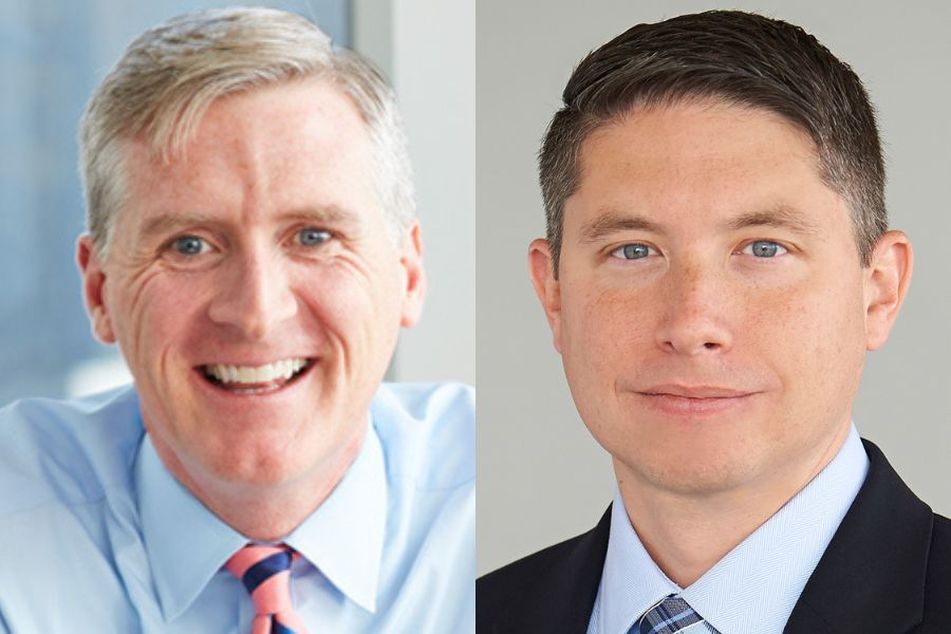Small-caps ready to take over market leadership, strategists say
 Francis Gannon of Royce Investment Partners and Jeff Schulze of ClearBridge Investments
Francis Gannon of Royce Investment Partners and Jeff Schulze of ClearBridge Investments
The recent run in small-cap and microcap stocks has advisors, fund managers and strategists telling their clients that it's time to think small.
Take note, advisors. The market’s Davids are finally taking over from the Goliaths.
The small-cap Russell 2000 index is up 14.5 percent in the past three months, handily outperforming the S&P 500 index by more than 3 percentage points. Given the current valuation disparity between large- and small-cap stocks, the Russell may extend its lead even further in the months ahead. Small-caps are historically cheap on both an absolute and relative basis, trading at 25-year lows relative to large-cap names.
Of course, the market’s whales, led by the so-called Magnificent 7 tech stocks, have been on a phenomenal run compared to its minnows over the past 12 months, with the S&P 500 returning more than 28 percent compared to the Russell 2000’s 8 percent return.
Still, the recent run in small- and microcap stocks has a number of advisors, fund managers and strategists telling their clients that it’s time to think small.
“As the Magnificent Seven becomes the Magnificent Four or the Fabulous Four or whatever is left, then small-caps are going to benefit from the broadening of the overall market and the fact that they are just so cheap, said Francis Gannon, co-chief investment officer at Royce Investment Partners.
Gannon said the explosion in small-cap shares in the fourth quarter portends well for the group in 2024, as well as for the market in general. When the equal-weighted Russell 1000 outperforms as it did the final three months of last year, small-caps typically outperform the S&P 500 by 600 basis points, he said.
Earnings will be the big story for small-caps this year, Gannon added, not just valuation and the end of Federal Reserve rate hikes.
Small-cap earnings “have been trailing the large-cap space and will start accelerating, doing better than the large-cap space,” he said. “And that’s going to be key to their outperformance.”
As for which sectors of the small-cap space will lead the way, Gannon likes industrials and materials, as well as some consumer discretionary areas.
“You’ve got enormous building taking place in the middle part of this country. You drive from Atlanta up to Ohio, and you just see massive building taking place,” he said. “So anything involved in automation and some of the machinery stocks I think are going to do incredibly well.”
Jeff Schulze, head of economic and market strategy at ClearBridge Investments, agrees with Gannon that the rotation to small-caps is finally at hand. He sees investors gradually moving away from the Magnificent 7 into long-ignored – and much smaller – names.
“All the laggards that we’ve seen since the beginning of last year we think represent good opportunities should this soft landing materialize,” Schulze said. That means smaller capitalization stocks, the Russell 1000 value and the S&P 493. But regardless, we do think that it’s going to be a really good environment for active managers.”
Kevin Rendino, CEO of microcap manager 180 Degree Capital, agrees with Gannon on the outsized potential for earnings growth in the small-cap arena. Rendino predicts an earnings pop of close to 20% earnings in the Russell 2000 this year, led by consumer discretionary and information technology companies.
Two of his top picks are cloud technology provider Synchronoss Technologies and consumer analytics provider Comscore. He owns around 10% of each stock, which is part of an investing strategy that provides him with a “voice” in the company.
While Rendino is a bottom-up stock-picker, he also believes the winds of change favor small-caps from a top-down, macro perspective.
“The difference between why we think small-caps will outperform this year is because the Fed is done,” he said. “We’ve looked at 15 rate-hiking cycles going back to 1981, and 14 out of the 15 times, the small-cap index was up one year after the last Fed increase and that percentage increase is over 22 percent. So the Fed being done is the catalyst this year.”
Smart steps for bringing a child into a financial advisory practice
Learn more about reprints and licensing for this article.








